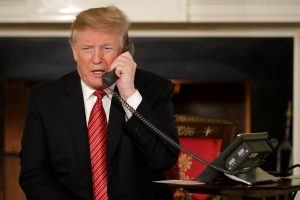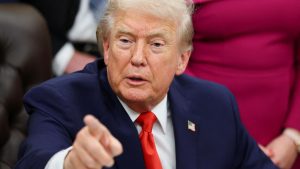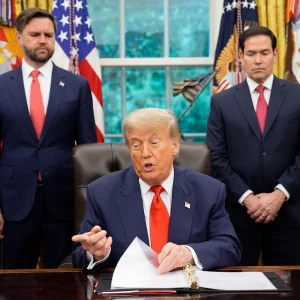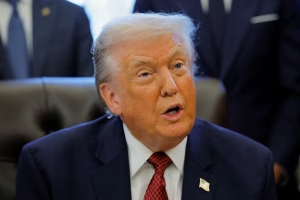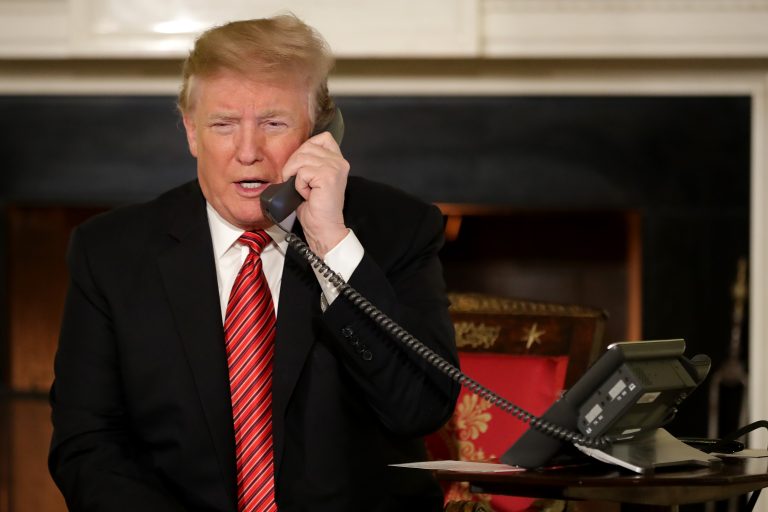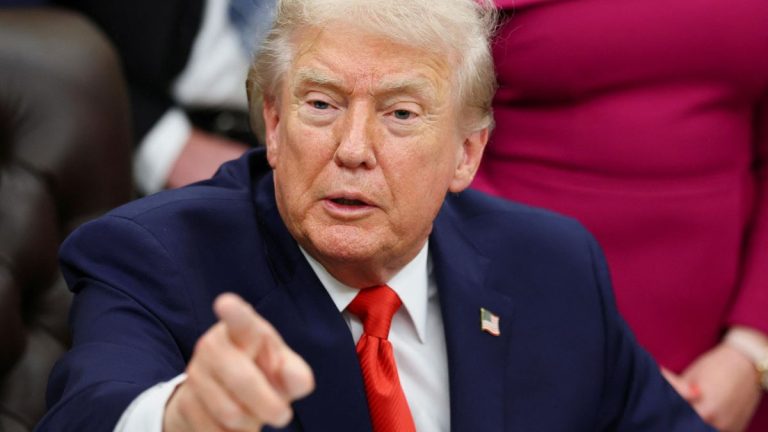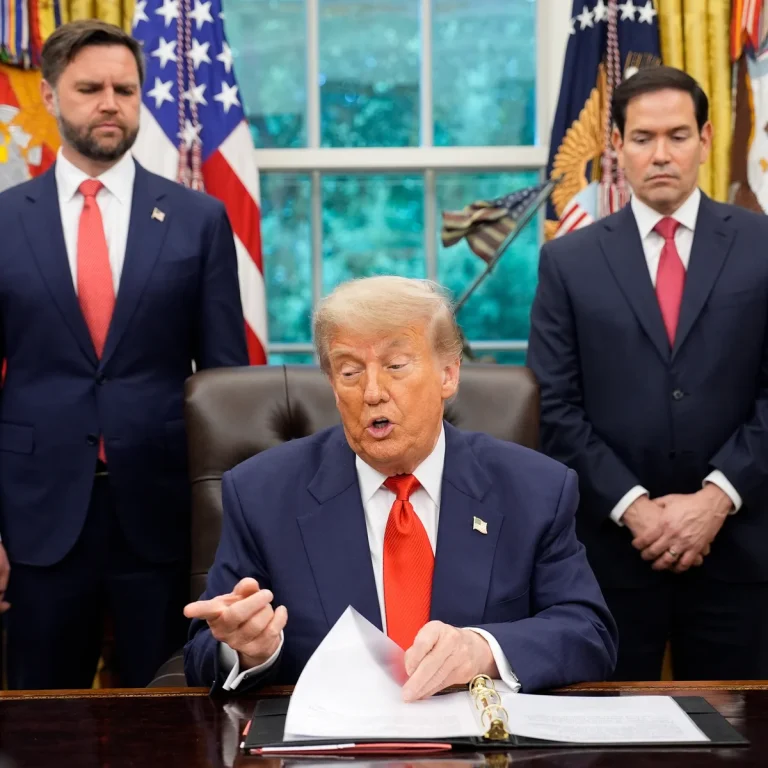As the U.S. government shutdown extends into its third week, the Trump administration’s aggressive move to reduce the federal workforce has triggered both significant action and legal resistance. Budget Director Russ Vought confirmed that the White House is pursuing plans that could result in more than 10,000 federal employees losing their jobs, marking one of the most extensive reduction-in-force (RIF) efforts in recent history. However, a federal court has temporarily blocked many of those layoffs, citing concerns over legality and potential political motivations.
A Major Shift in Shutdown Policy
Historically, government shutdowns have led to temporary furloughs—unpaid leaves for non-essential employees—rather than permanent terminations. But this time, the approach has been different. Vought, who directs the Office of Management and Budget (OMB), announced that the administration intends to use the funding lapse to permanently downsize agencies and programs deemed unnecessary or inconsistent with the president’s agenda.
In public statements, including an interview with Politico and comments on The Charlie Kirk Show, Vought outlined the administration’s rationale. He said the White House views the current shutdown not just as a disruption to operations, but as an opportunity to “shutter the bureaucracy.” According to him, the aim is not only to halt funding but to eliminate what he called redundant or ideologically driven positions within the federal government.
Multiple reputable outlets—including Politico, Axios, and CBS News—have confirmed that the administration’s plan could impact over 10,000 positions. The layoffs would primarily occur through RIF procedures, which allow agencies to permanently terminate employees during budgetary reductions.
Thousands of Layoff Notices Issued
Reports indicate that several federal agencies have already begun implementing RIFs. According to Axios and Politico, more than 4,000 employees have received official layoff notices. These include staff in departments overseeing environmental, energy, and cybersecurity programs—areas where the administration has previously sought to cut spending.
The layoffs were formally initiated early in the shutdown, with Vought publicly stating on social media that “The RIFs have begun.” His announcement drew sharp reactions from federal unions, Democratic lawmakers, and watchdog groups, many of whom argue that such large-scale terminations during a funding lapse exceed the administration’s legal authority.
At the heart of the controversy lies the distinction between furloughs and layoffs. Furloughs are temporary and reversible once funding resumes, whereas RIFs result in permanent job loss. The use of permanent cuts during a shutdown is rare and, in some experts’ view, potentially unlawful without congressional approval or a completed reorganization plan.
The Legal Intervention
The administration’s actions quickly faced judicial scrutiny. On October 17, U.S. District Judge Susan Illston in San Francisco issued a temporary restraining order (TRO) blocking the Trump administration from carrying out further layoffs tied to the shutdown. The order came after several federal employee unions and advocacy organizations filed lawsuits alleging that the RIFs were politically motivated and violated due process protections.
According to AP News and CBS News, Judge Illston’s order prevents agencies from implementing new or pending layoffs for at least two weeks while the court reviews the case in more detail. In her ruling, Illston cited “credible evidence” that the cuts may have targeted programs disfavored by the administration, such as environmental justice initiatives and cybersecurity offices, raising concerns about selective enforcement and political retaliation.
The Government Executive and Politico Pro reports confirm that the injunction covers both planned and active RIFs associated with the shutdown. It effectively freezes all reduction efforts until the court determines whether the administration’s actions comply with federal employment and administrative law.
Political and Administrative Reactions
The White House has stood by its decision. Vought and other senior officials argue that reducing the federal workforce is a necessary step toward limiting government size and restoring fiscal responsibility. Supporters within the Republican Party see the move as a long-awaited attempt to streamline Washington’s bureaucracy.
However, critics—including several Democrats and independent analysts—warn that the layoffs could have lasting consequences on federal services, particularly in areas such as cybersecurity, infrastructure safety, and environmental protection. They argue that abruptly removing thousands of employees from key agencies during a shutdown risks destabilizing essential operations once funding is restored.
Unions representing federal workers have also voiced alarm. The American Federation of Government Employees (AFGE) and the National Treasury Employees Union (NTEU) both filed motions to block the terminations, calling them “mass political purges” rather than legitimate budgetary actions. They contend that the RIFs bypass established civil service protections and were executed without proper consultation or review.
Broader Implications for Governance
If upheld, the administration’s approach could mark a major shift in how shutdowns are used as political leverage. Traditionally, shutdowns result from congressional gridlock over budget bills, with the understanding that operations and employment resume once a deal is reached. The Trump administration’s move introduces a new dimension—using a shutdown to permanently shrink government headcount and programs.
Analysts note that even the threat of mass layoffs could influence future budget negotiations. Federal employees, aware that a shutdown might now lead to permanent job loss, may feel increased uncertainty, while agencies could struggle to retain skilled personnel. “This changes the calculus,” said one former OMB official quoted by Axios. “It turns a temporary budget standoff into an opportunity for structural change.”
The Human and Economic Impact
Beyond the legal and political implications, the immediate human impact is significant. Thousands of federal workers are now living with uncertainty about whether their jobs will still exist when the government reopens. Essential employees—such as military personnel, law enforcement officers, and border agents—continue to work without pay, while furloughed staff wait for a resolution.
In agencies that have issued RIF notices, morale has reportedly plummeted. Supervisors face confusion about how to proceed under the court’s temporary order, and many employees are seeking legal advice or exploring private-sector opportunities. Unions have begun organizing information sessions and legal clinics to help affected workers navigate the complex appeals process.
Economists warn that if the layoffs proceed after the court’s review, the ripple effects could extend beyond Washington. The loss of 10,000 or more federal jobs could slow regional economies in areas with high concentrations of government employment, including parts of Virginia, Maryland, and California. Combined with furlough-related income losses, the broader economic drag could reach hundreds of millions of dollars.
Next Steps
The Justice Department has not yet indicated whether it will appeal Judge Illston’s temporary restraining order, though administration officials have suggested they will “vigorously defend” their authority to manage the executive branch’s workforce. The court is expected to hold additional hearings later this month to determine whether to convert the temporary order into a longer-term injunction.
Meanwhile, negotiations in Congress remain stalled. Lawmakers have yet to agree on a continuing resolution or full-year budget, leaving the shutdown without a clear endpoint. Until funding is restored, the federal workforce remains in limbo—caught between administrative downsizing efforts and legal protections designed to ensure fair employment practices.
Conclusion
The Trump administration’s attempt to use the government shutdown as a vehicle for permanent federal layoffs marks an unprecedented moment in U.S. governance. Confirmed reports from Politico, Axios, CBS News, and AP News show that the White House has initiated a plan to eliminate over 10,000 positions, with thousands of employees already receiving termination notices. Yet, as the courts intervene to block those actions temporarily, the broader questions—about legality, ethics, and the future of the federal workforce—remain unresolved.
Whether this moment becomes a turning point or a temporary standoff will depend on the coming weeks. For now, the federal government stands partially shuttered, its employees anxious, and its long-term structure hanging in the balance—caught between administrative ambition and judicial restraint.

Emily Johnson is a critically acclaimed essayist and novelist known for her thought-provoking works centered on feminism, women’s rights, and modern relationships. Born and raised in Portland, Oregon, Emily grew up with a deep love of books, often spending her afternoons at her local library. She went on to study literature and gender studies at UCLA, where she became deeply involved in activism and began publishing essays in campus journals. Her debut essay collection, Voices Unbound, struck a chord with readers nationwide for its fearless exploration of gender dynamics, identity, and the challenges faced by women in contemporary society. Emily later transitioned into fiction, writing novels that balance compelling storytelling with social commentary. Her protagonists are often strong, multidimensional women navigating love, ambition, and the struggles of everyday life, making her a favorite among readers who crave authentic, relatable narratives. Critics praise her ability to merge personal intimacy with universal themes. Off the page, Emily is an advocate for women in publishing, leading workshops that encourage young female writers to embrace their voices. She lives in Seattle with her partner and two rescue cats, where she continues to write, teach, and inspire a new generation of storytellers.
